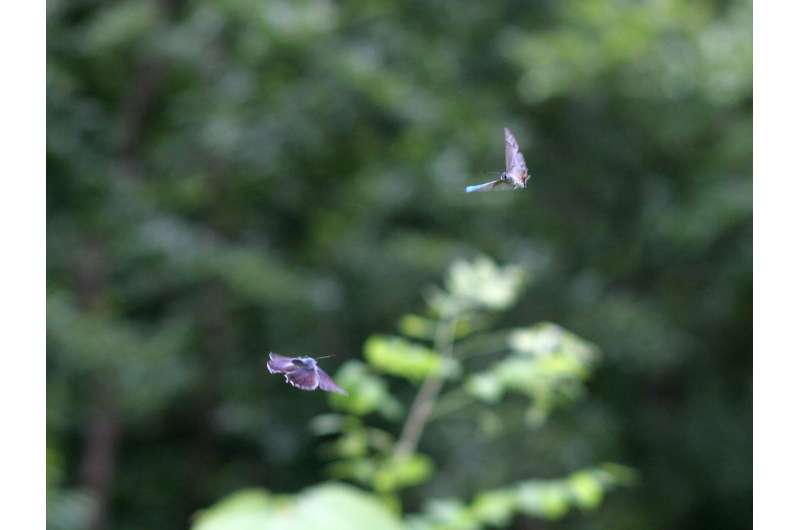Butterflies: Agonistic display or courtship behavior?

A study shows that contests of butterflies occur only as erroneous courtships between sexually active males that are unable to distinguish the sex of the other butterflies. These findings by Tsuyoshi Takeuchi from Osaka Prefecture University in Japan were highlighted in a review article in the Journal of Ethology, the official journal of the Japan Ethological Society.
Males of various butterfly species compete over mating territory via prolonged aerial interactions. Their contest behavior has previously been explained by the "war of attrition" model in the context of game theory, where two contestants perform costly displays until one of them reaches its limit, or cost threshold, and gives up. However, butterflies lack weapons or any obvious means to attack their opponent and thus it is difficult to explain why they perform aerial displays that impose costs not on their opponent but on themselves.
Takeuchi and his collaborators found in their previous study2 that there is no evidence that males of territorial butterflies can discriminate the sex of flying conspecifics. Considering the inability to distinguish the sex of their opponents, the male aerial interactions of territorial butterflies should be viewed as prolonged courtship behavior between males chasing each other. They wrongly assume that their opponent is a receptive female and they are not being accepted.
This framework provides a prediction that a contest should occur only between flying males and not between sitting males. Takeuchi reviewed past research on competition over mating opportunity in butterflies. He found that it supported the erroneous courtship theory as expected, revealing that "air combats" take place over mating territory between flying males but contests do not occur when males are sitting around a female or a female pupa.
Assumptions based on human senses can sometimes be misleading in our understanding of animals. Based on observational and experimental results, the author provides controversial but an important framework to understand butterfly behavior. The applicability of this logic to other taxa remains to be investigated.
More information: Tsuyoshi Takeuchi, Agonistic display or courtship behavior? A review of contests over mating opportunity in butterflies, Journal of Ethology (2016). DOI: 10.1007/s10164-016-0487-3
Provided by Springer



















